The aim of a proper usage in the Grünewald in the frame of a management close to nature is the creation of a healthy and high quality tree population. This management can be reached by precise and selective clearing interventions on the young trees. In fact it is possible to strongly influence the mutual development between the trees in favour of the healthy, strong and required species all by cutting down the damaged and weak ones (negative selection procedure).
Selective thinning
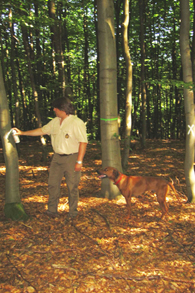
Negative selection procedure
The forester marks two trees which could eventually represent an obstacle for other stronger trees (marked with a green ribbon). The trees marked with a cross have to be cut down.
All rare and pioneer species however and all those kinds that help to preserve the character of a real mixed forest have to be looked after with the greatest care. As soon as it can be determined what trees are able to reach the required trunk diameter (aimed force) and quality (future trees), they are favoured and get special care (positive selection) and all eventual other trees around that could prevent in any way their development are marked by the forester and cut down. With this method the healthy and strong trees are able to develop at their best.
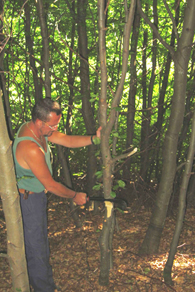
Positive selection procedure
A forest worker is cutting down a malformed beech (trunk has the form of a fork).
As the success of a good care management can be weakened by ground damage, provoked by cut downs and cleaning, special soft ground treatments are used and the deployment of real horse power is applied.
Principle of clearing
With the regular collection of clearing wood the healthy and vital trees are deliberately preserved.
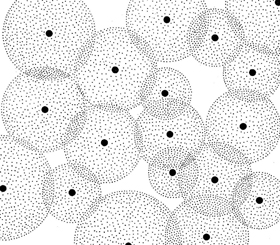 Before the thinning |
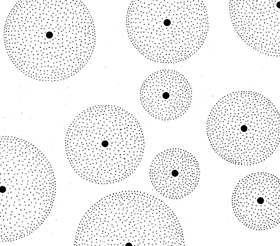 After the thinning |
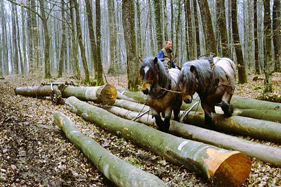 The mobilisation of draughts when harvesting the timber protects the forest ground and other trees from damage and cleaning damages are prevented with the greatest care. |
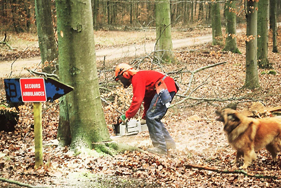 Forest worker cutting down a beech |
